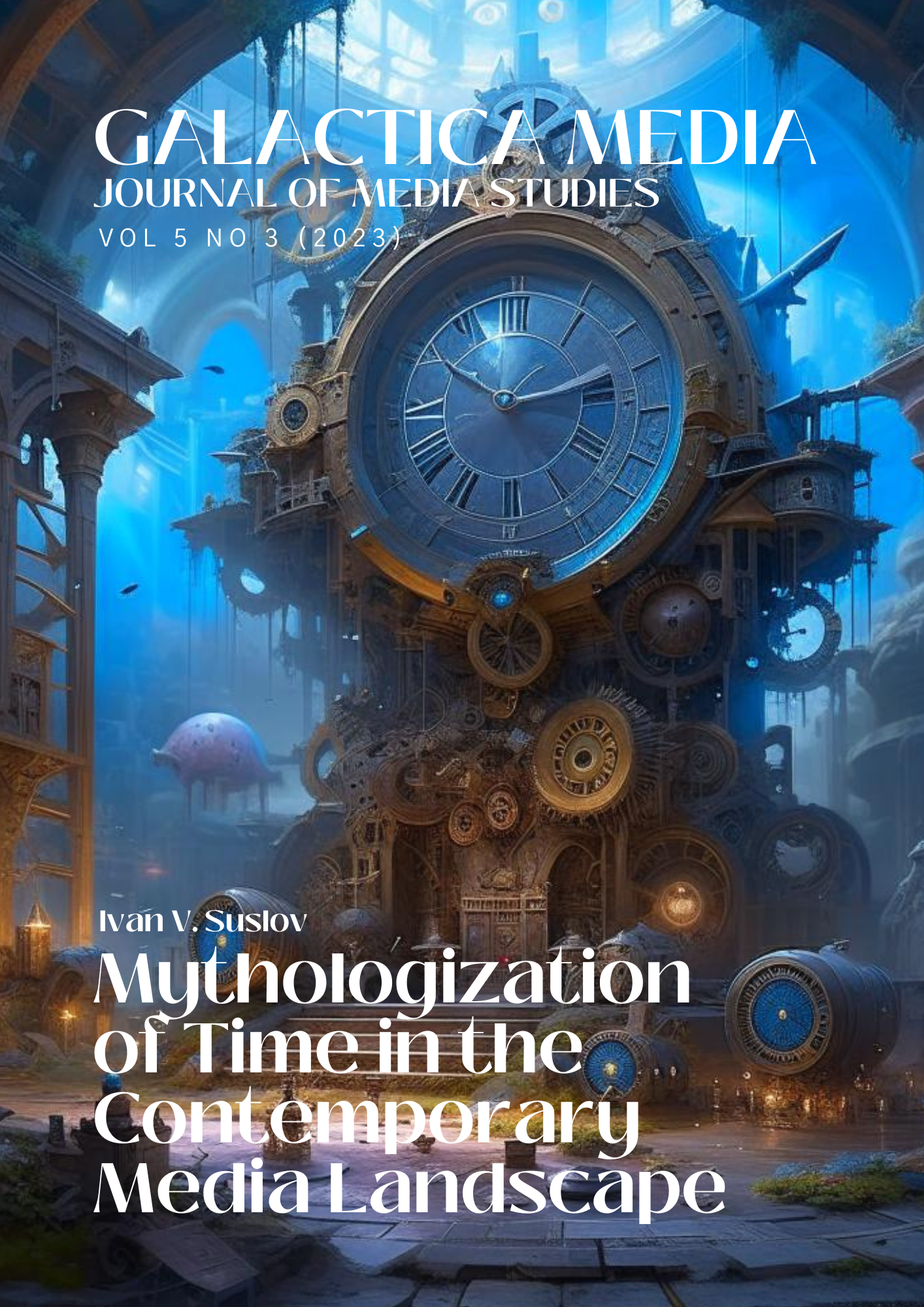Abstract
The peer-reviewed collective monograph explores the mythologization of time in modern media environments. Philosophers from Lipetsk (A.G. Ivanov, A.A. Linchenko, I.P. Polyakova) and Saratov (S.V. Tikhonova, D.S. Artamonov) consider theoretical and methodological aspects of the mythological understanding of time, analyze time frames in the media environment, use different philosophical approaches in the study of “strange time”. Attention is also paid to practical aspects of time management in everyday life, peculiarities of time mythologization in computer games, digital history, Internet memes and media projects. The specifics of time representation in British TV series and interactive cinema, as well as its manifestations in musical works, also come into the focus of scientific interest. In general, the monograph is a comprehensive study of the mythological dimension of time in the context of contemporary media environment.
The instant mythologization of time in media space implies a rejection of the modernist idea of a straightforward flow of time and a return to ancient ideas about the cyclical nature of time periods. A clear temporal sequence of past-present-future is denied and it is argued that events are not necessarily subject to temporal logic. These trends arise from the use of new digital and media technologies that allow ordinary people to experience archaic notions of time in everyday life.
References
Agamben, G. (2012). What Is the Contemporary? DUH I LITERA. (In Russian).
Barthes, R. (2004). Mythologies. Izdatelstvo im. Sabashnikovykh. (In Russian).
Foucault, M. (2010). The Birth of Biopolitics. Nauka. (In Russian).
Harman, G. (2018). Art and Objects. Polity Press. https://doi.org/10.1080/14434318.2021.1934782
Ivanov, A. G., Tikhonova, S. V., Linchenko, A. A., Artamonov, D. S., & Polyakova, I. P. (2022). Mythologization of Time in the Modern Media Environment. Izdatelstvo Lipetskogo gosudarstvennogo tekhnicheskogo universiteta. (In Russian).
Latour, B. (2014). Reassembling the Social: An Introduction to Actor-Network Theory. Izdatelskiy Dom Vysshey shkoly ekonomiki. (In Russian).
Lévi-Strauss, C. (2020). Primitive Thought. Akademicheskiy proyekt. (In Russian).
Nissenbaum, A. (2018). Meme Templates as Expressive in a Globalizing World: A Cross-Lingvuistic Study. Journal of Computer-Mediated Communication, 23(8), 294–310. https://doi.org/10.1093/jcmc/zmy016
Saxton, L. (2020). True Story: Defining Accuracy and Authenticity in Historical Fiction. Rethinking History, 24(2), 127–144. https://doi.org/10.1080/13642529.2020.1727189
Seamon, J. (2015). What Films Can Teach Us about Memory. MIT Press.
Wexler, A. (2017). The Social Context of “Do-It-Yourself” Brain Stimulation: Neurohackers, Biohackers, and Lifehackers. Frontiers in Human Neuroscience, 11, 224. https://doi.org/10.3389/fnhum.2017.00224

This work is licensed under a Creative Commons Attribution 4.0 International License.


